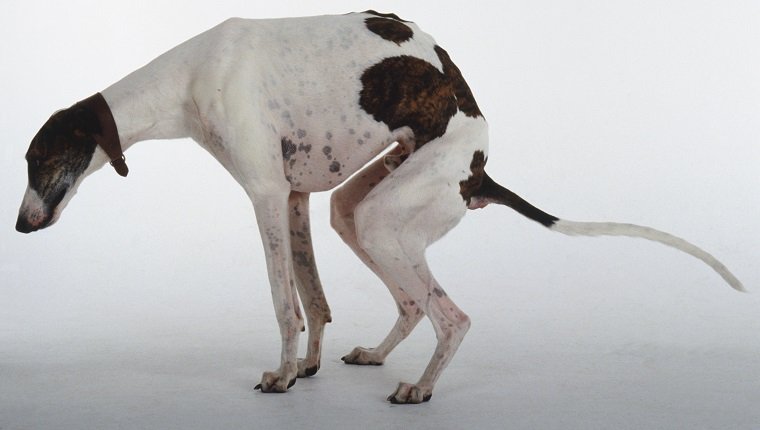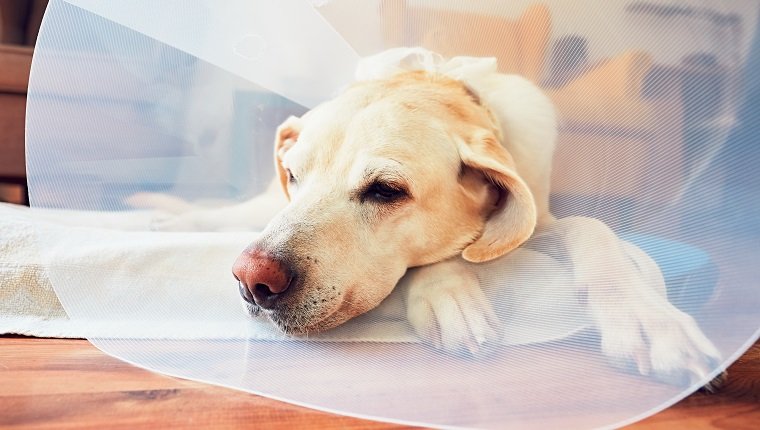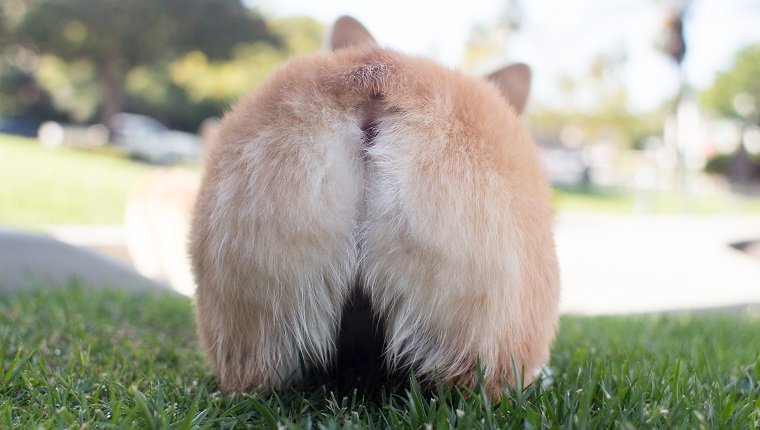Rectal prolapse in dogs happens when the inner layers of the rectum–the end region of the large intestine–push out and protrude from the anus. Usually this happens when dogs strain to defecate, urinate, or give birth.
Rectal prolapse can happen in dogs of any breed, age, or sex for several reasons, including digestive and urinary disorders. Over time, circulation to the rectum can become compromised, and the rectal tissue can easily suffer damage.
This should be treated as an emergency situation and requires immediate veterinary care. If you see the signs of rectal prolapse in your dog, consult your veterinarian so they can diagnose it and begin treatment.
Here’s what you should know about the symptoms, causes, and treatments for rectal prolapse in dogs.
Symptoms Of Rectal Prolapse In Dogs

The most obvious way to spot rectal prolapse in dogs is by the pink tube of flesh protruding from the anus, especially after defecation or urination.
If circulation to the rectum is compromised, the pink flesh may turn purple or black.
The prolapse may be incomplete, which means only a small portion of the rectal lining is visible when a dog poops, but it subsides shortly after. Or, the prolapse may be complete, meaning a mass of tissue remains visible.
Dogs who suffer from rectal prolapse will likely strain when trying to poop and may lick the prolapsed tissue.
Causes Of Rectal Prolapse In Dogs

Parasitic infections are the most common cause of rectal prolapse in dogs, but there are several other possible causes.
The condition most often appears in puppies under the age of six months old, though it can happen to dogs of any age.
Here are some conditions that may result in rectal prolapse:
- Diarrhea
- Constipation
- Straining to defecate
- Intestinal irritation or inflammation
- Bacterial or viral infection
- Enlarged prostate
- Rectal or anal tumors
- Bladder inflammation
- Stones in the urinary tract
- Abnormal labor or birthing
- Rectal deviation
- Anal sac disease
- Perineal hernia
- Rectal or anal narrowing (caused by scar tissue from injury or inflammation)
Treatments For Rectal Prolapse In Dogs

Treatment for rectal prolapse in dogs depends on the cause of the condition and how damaged the rectal tissue is.
If there is a bacterial, viral, or parasitic infection, a vet will need treat it, usually with antibiotics or anti-parasitic drugs. They will treat other underlying factors accordingly.
If the rectal tissue hasn’t suffered too much damage, the vet will likely attempt to manually push the rectum back into place and put a suture around the anus, which will stay in for about 48 hours. The vet may provide an anesthetic such as an epidural to relieve discomfort. The dog will still be able to defecate while the sutures are in.
Sometimes this procedure fails, in which case the vet may perform a coloplexy. This is a more invasive procedure where the vet surgically opens the abdomen and tacks the colon to the abdominal wall to stop the rectum from slipping out.
When the rectal tissue is too damaged to save or if other procedures have failed, vets may consider one final option. In these cases, vets may surgically remove the rectal tissue and anchor the intestine to the anus. This often results in complications such as incontinence, so vets will try to avoid it if possible.
Do you keep an eye out for anything unusual while your dog goes potty? Let us know in the comments below!







